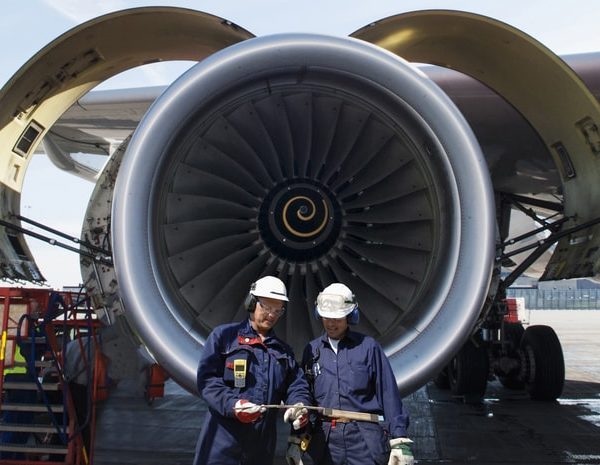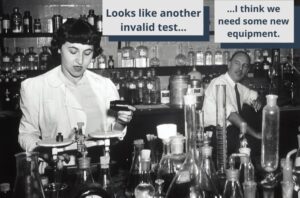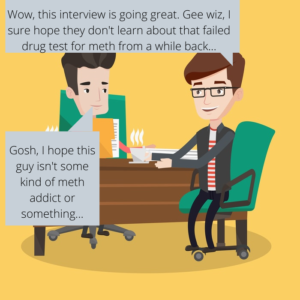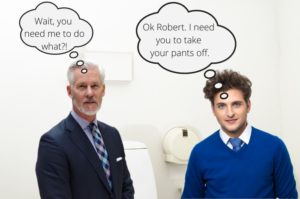FAA drug testing has rules that apply only to FAA-regulated companies. They can be found in 14 CFR Part 120. The other DOT agencies have their own rules. Those agencies include the FMCSA, FRA, FTA, and PHMSA.
We also have a post covering DOT drug testing requirements. It is relevant to all DOT agencies. Learn about the DOT testing procedures, safety-sensitive positions, testing safeguards, and DOT drug testing situations in this post.
FAA drug testing has specific rules for the following:
- Random testing rates for drugs and alcohol
- Reasonable suspicion testing requirements
- Definition of an “accident”
- Safety-sensitive positions
- Requirements for different classes of safety-sensitive positions
- Permanent disqualification from safety-sensitive functions
- Effect of drug and alcohol test failures on FAA certification
The FAA Random Testing Rates for Drugs and Alcohol
Random testing rate is a percentage of a safety-sensitive workforce that must get drug or alcohol tested over the course of one year.
The FAA random testing rates in 2019 are as follows:
- 25% of safety-sensitive workforce for drugs
- 10% of safety-sensitive workforce for alcohol
What this means is that if you have 100 safety-sensitive employees, you must have 25 random drug test results in a given year. And 10 random alcohol tests per year.
What if One of My Employees Gets Chosen for Testing Multiple Times?
I say test results and not number of employees tested for this very reason. One employee may get tested multiple times. Each test result counts as an individual test result. It does not matter whether it is from an employee with an earlier test result.
So, you do not have to random test 25 different people. Instead, you must do 25 random drug tests. Whether that ends up being 25 employees or 21, it doesn’t matter.
The Number of Safety-Sensitive Employees We Employ Varies Throughout the Year. How Do I Determine the Correct Number of Random Tests to Conduct?
First, FAA regulations specify the following equation to determine your random testing rate:
Number of test results/ Average number of safety-sensitive employees eligible for random testing
You must use the average number of safety-sensitive employees eligible for random testing throughout the year.
To find this average, you would need to calculate a weighted average.
But if you just want an estimate, you can calculate an unweighted average. Add up all the different instances that you had a different number of employees. Then divide it by the number of different employees instances.
Second, you won’t be able to calculate this number exactly until the end of the calendar year. As a result, it is a good idea to do a few more tests than necessary to reach the 25% random drug testing rate.
If you are working with a C/TPA, typically they track this for you. But it is still always a good idea to do this calculation yourself and make sure you are meeting the random testing rate.
FAA Reasonable Suspicion Testing Rules
Each DOT agency has its own rules on reasonable suspicion testing. Each agency determines how many supervisors are needed to require a reasonable suspicion drug or alcohol test.
For a reasonable suspicion drug test, the FAA requires two supervisors to agree on doing the test. One of the supervisors must have training in determining the signs and symptoms of drug use.
You’re in luck on that note, since reasonable suspicion training is one thing we do pretty well. For quality training just click that link. It’ll make sure your supervisors are both legally allowed to and capable of determining reasonable suspicion.
There is an exception to the two supervisor rule, though. If an employer has 50 or fewer safety-sensitive employees, one trained supervisor is sufficient to do a reasonable suspicion drug test.
Unless the employer is a part 121 certificate holder. Part 121 certificate holders have operational tasks beyond just civil aviation and, as a result, still require more stringent testing rules regardless of size.
For a reasonable suspicion alcohol test, the FAA only requires one supervisor trained in determining the signs of alcohol use (Yeah, our training covers this too 🙂 ). For alcohol, the supervisor’s observations must be made just before, during, or just after safety-sensitive functions. Alcohol use outside of these time periods is not a federal offense.
This last point is not only the case for FAA testing, but it is important, so I went ahead and mentioned it.
The FAA Definition of an “Accident”
I know, it’s pretty obvious what an accident is. You know it when you see it. But each DOT agency has its own definition of what constitutes an accident, since each agency involves a different type of vehicle. The FAA is no exception.
And as you probably should expect at this point, the FAA definition is specific and detailed:
An occurrence associated with the operation of an aircraft which takes place between the time any individual boards the aircraft with the intention of flight and all such individuals have disembarked, and in which any individual suffers death or serious injury, or in which the aircraft receives substantial damage.
According to the FAA, an accident is an event involving an aircraft from boarding to disembarking (meaning any time during a flight). And, there must be death, serious injury, or substantial damage to the aircraft.
Death is pretty straightforward to assess. But serious injury and substantial damage?
Serious Injury and Substantial Damage: Required Parameters for an “Accident”
The National Transportation Safety Board (NTSB) defines each of these terms.
Serious Injury
There are five parts to the NTSB definition of serious injury:
- Any injury that requires hospitalization for more than 48 hours. The hospitalization must happen within seven days of the injury.
- Any injury that results in bone fractures. Exceptions are simple fractures of toes, fingers, or nose.
- Any injury involving second or third-degree burns. Also, any burn that affects more than 5% of the body.
- Any injury that causes severe hemorrhages, muscle, nerve, or tendon damage.
- Any injury that involves an internal organ.
If an injury meets any of these points and happens during an air flight, we have ourselves an accident.
Substantial Damage
The NTSB also defines substantial damage. Naturally, it is unnecessarily wordy:
Substantial damage means damage or failure which adversely affects the structural strength, performance, or flight characteristics of the aircraft, and which would normally require major repair or replacement of the affected components.
In simpler terms, substantial damage is any type of damage that requires serious repairs or replacements. Also, that damage must affect the plane’s ability to function.
To clarify, here are a few examples of what would not be considered substantial damage:
- Engine damage if only one engine fails or is damaged
- Bent fairings or cowling
- Dented skin or small punctured holes in the skin
- Ground damage to rotor or propellor blades
- Damage to landing gear, wheels, tires, flaps, engine accessories, brakes, or wingtips
Why Does Determining Whether It Was an Accident Matter?
You need to understand these terms and when the incident is actually an “accident.” Whenever there is an accident according to these definitions, you must do post-accident drug and alcohol testing.
FAA drug testing rules say that any time there is an accident, the individuals involved must get drug and alcohol tested.
If you do not do post-accident testing when it is required, you may face sanctions by the DOT and FAA.
And if you don’t think it is an accident when it in fact is, then you may find yourself in this exact situation.
FAA Post-Accident Testing Rules
Let’s assume there was an accident meeting the above points. You must do post-accident drug and alcohol testing on any surviving, covered safety-sensitive employee whose performance may have:
- Contributed to the accident, OR
- Cannot be discounted as contributing to the accident
Safety-sensitive employees involved in the accident must not use alcohol following it. They are involved if they have knowledge of the accident and performed a safety-sensitive function on the involved aircraft at or near the time of the accident.
They must not use alcohol for eight hours after the accident. Or until one of the following occurs:
- Employer determines that they could not have contributed to the accident or
- They take an alcohol test
After eight hours, you cannot do alcohol testing. Too much time has passed for an alcohol test to reflect BAC at the time of the accident.
However, FAA drug testing rules allow a drug test up to 32 hours after the accident. Testing can detect drugs after longer periods of time than alcohol.
After 32 hours, though, the DOT and FAA do not allow either drug or alcohol testing. After this much time, testing is unlikely to reflect drug and alcohol levels at the time of the accident.
FAA Safety-Sensitive Positions
Another part of FAA drug testing that is specific to FAA-regulated companies is the list of safety-sensitive positions.
To clarify, a safety-sensitive position is any position that has functions that may affect public safety. So, these positions must take part in the federal drug testing program. Drug and alcohol use in these positions can negatively impact public safety.
The safety-sensitive positions are any positions that involve the following functions:
- Flight crewmember duties
- Flight attendant duties
- Flight instruction duties
- Aircraft dispatcher duties
- Aircraft maintenance and preventive maintenance duties
- Ground security coordinator duties
- Aviation screening duties
- Air traffic control duties
- Operations control specialist duties
We have another post that goes into detail on the FAA safety-sensitive positions. In this post you will learn about the various safety-sensitive functions for both the FAA and FMCSA. If you’d like to learn more about all things “safety-sensitive,” then click the link.
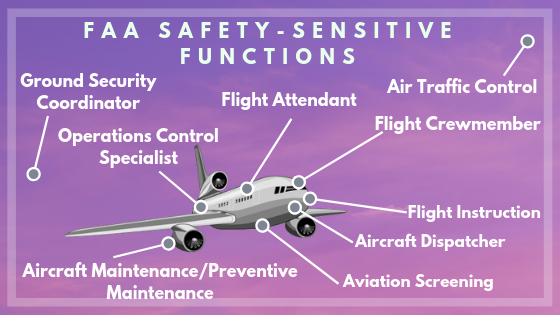
Permanent Disqualification from FAA Safety-Sensitive Functions
Unlike other DOT agencies, the FAA has rules for permanent disqualification. Other agencies allow employees to continually complete the DOT return-to-duty process after repeated violations. The FAA is not so generous.
Second Violation
If you receive two positive drug test results or two alcohol violations, you are permanently disqualified from performing the safety-sensitive functions that you were performing prior to the second drug test or second alcohol violation.
You are only disqualified from performing those specific safety-sensitive functions, though. You are still eligible to perform other safety-sensitive functions. That’s if you can find an employer willing to hire you…
On-Duty Use
Also, if you are caught using prohibited drugs or alcohol while performing safety-sensitive functions, you are permanently disqualified. On-duty use is grounds for immediate disqualification.
Again, in this case, you are only disqualified from the safety-sensitive functions your role included at the time of the violation.
Refusal to Test Consequences for Different Certificate Holders
Some individuals may hold certificates for their positions. FAA drug testing rules state that individuals that hold these certificates face additional penalties for a refusal to test. There are three of these certificate holders:
- Part 61 certificate holders: pilots, flight instructors, and ground instructors
- Part 63 certificate holders: crewmembers other than pilots (flight navigators and engineers)
- Flight navigators
- Flight engineers
- Part 65 certificate holders: airmen other than flight crewmembers
- Air traffic control-tower operators
- Aircraft dispatchers
- Mechanics
- Repairmen
- Parachute riggers
For these certificate holders, a refusal to test may result in denial, for up to one year, of any further certifications under the part that the individual currently holds certification for. Also, it may result in the revocation of any current certifications under that part.
Airman Medical Certificate
Also, one final element of FAA drug testing is the airman medical certificate. Some pilots must obtain an airman medical certificate to perform their safety-sensitive functions. These certificates are issued under 14 CFR Part 67.
But alcohol and drugs can harm health. So if a pilot holding an airman medical certificate fails any drug or alcohol test, they must obtain a new certificate. Also, if they refuse to test they must obtain a new certificate.
They must receive this certificate from the Federal Air Surgeon after the date of the test failure or refusal to test. As a result, the one they held before the testing failure is not valid anymore. And they cannot do their job until they obtain a new certificate.
Conclusion
The FAA has specific rules because of the distinctions of the industry.
The random testing rates, safety-sensitive positions, the definition of an accident, permanent disqualifications, and consequences for certificate holders are all distinct to the FAA.
If you would like more info general to all DOT agencies, you can learn more in our DOT Drug Testing Requirements post. It covers the components of a DOT drug and alcohol testing program.
So now a question for you: are you an employee at an aviation company? If so, are you safety-sensitive? Let us know in the comments below.
